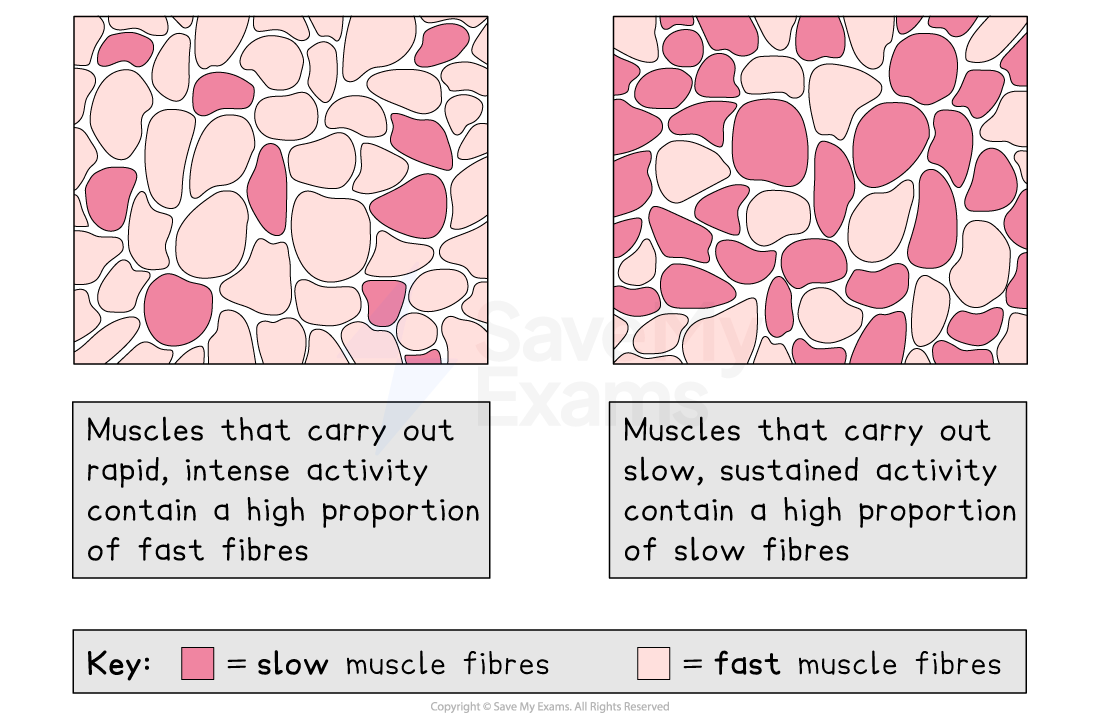Slow & Fast Skeletal Muscles (AQA A Level Biology): Revision Note
Exam code: 7402
Slow & fast skeletal muscle fibres
There are two types of muscle fibres in skeletal muscles
Fast fibres
Slow fibres
The two fibre types have different properties, so the relative proportion of each present in muscle tissue determines the properties of the muscle
Fast muscle fibres
Fast muscle fibres:
contract rapidly
rely on anaerobic respiration for ATP supply
fatigue quickly due to lactate production
are pale in colour
They have few capillaries and are low in myoglobin due to their low oxygen requirements
Fast fibres are suited to short bursts of high-intensity activity, e.g. in:
the limbs of animals that flee predators or hunt prey at high speeds
human eyelid muscles
biceps and triceps in the upper arms of humans
Slow muscle fibres
Slow muscle fibres:
contract more slowly
rely on aerobic respiration for ATP
fatigue slowly due to reduced lactate production
are darker in colour
They have a dense capillary network and are high in myoglobin and haemoglobin due to their demand for oxygen
Slow fibres are suited to sustained, low intensity activities, e.g. in
the limbs of animals that migrate or stalk prey over long distances
human back and leg muscles

Fast muscle fibres | Slow muscle fibres |
|---|---|
Contracts rapidly | Contracts slowly |
ATP supplied mostly from anaerobic respiration | ATP supplied mostly from aerobic respiration |
Fatigues rapidly due to high lactate production rate | Fatigues more slowly due to reduced lactate formation |
Fewer, smaller mitochondria | Many, large mitochondria |
Large glycogen and phosphocreatine stores | Small glycogen and phosphocreatine stores |
Large store of calcium ions in the sarcoplasmic reticulum | Small store of calcium ions in the sarcoplasmic reticulum |
Fewer capillaries | More capillaries |
High ATP hydrolase activity | Lower ATP hydrolase activity |
Examiner Tips and Tricks
Make sure that you can link the features of fast and slow muscle fibres to the function of the fibre type, e.g.:
Fast muscle fibres contain fewer mitochondria because they rely mainly on anaerobic respiration; aerobic respiration provides energy too slowly for their fast rate of contraction
Slow muscle fibres have small stores of phosphocreatine because they produce enough ATP for their slow contraction rate by aerobic respiration

Unlock more, it's free!
Did this page help you?